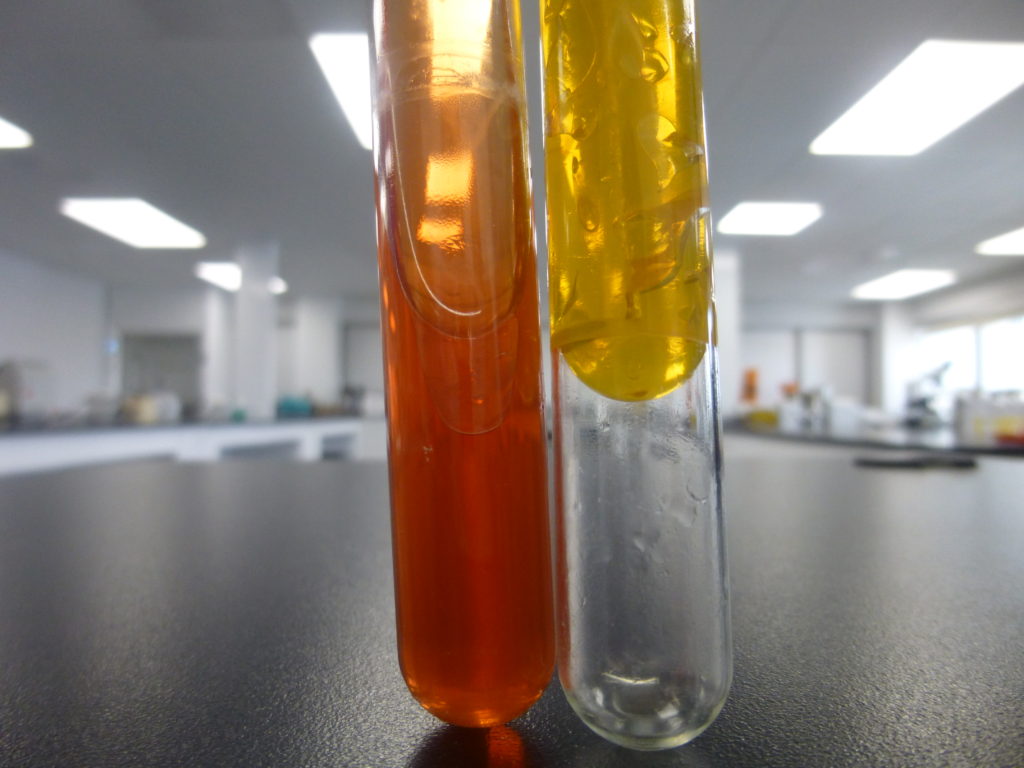
Ornamental ponds are an important feature of many backyard gardens. These water gardens allow a gardener to grow beautiful and unique plants that aren’t present in the rest of the garden. The pond water is often welcome habitat for amphibians and introduced fish (and herons!). Water gardens are also habitat for microbial life which includes bacteria, protists, and fungi.
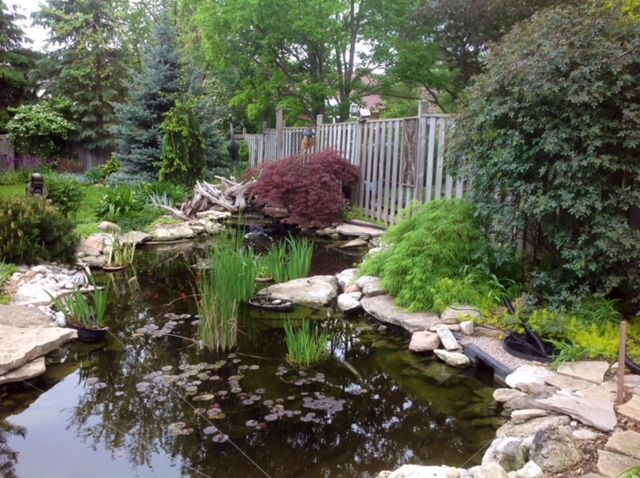
Backyard pond of one of the members of London Middlesex Master Gardeners
Bacteria and how we test for them
Bacteria have an undeserved bad reputation. Most bacteria will not bother us humans; only the slim minority will cause illness. Bacteria living in water are no different, with the majority causing us no problems. Potentially dangerous bacteria are detected in water by their ability to use the sugar lactose. The reasoning goes something like this:
- Lactose is a sugar only found in mammalian intestines as it originates in mammalian milk.
- Bacteria that can use lactose may have originated in a mammalian intestine.
These bacteria that use lactose and grow at 37 C are called coliforms. They are common in soil and do not necessarily indicate the water has been contaminated. In Ontario, drinking water must have 0 coliforms/ml.
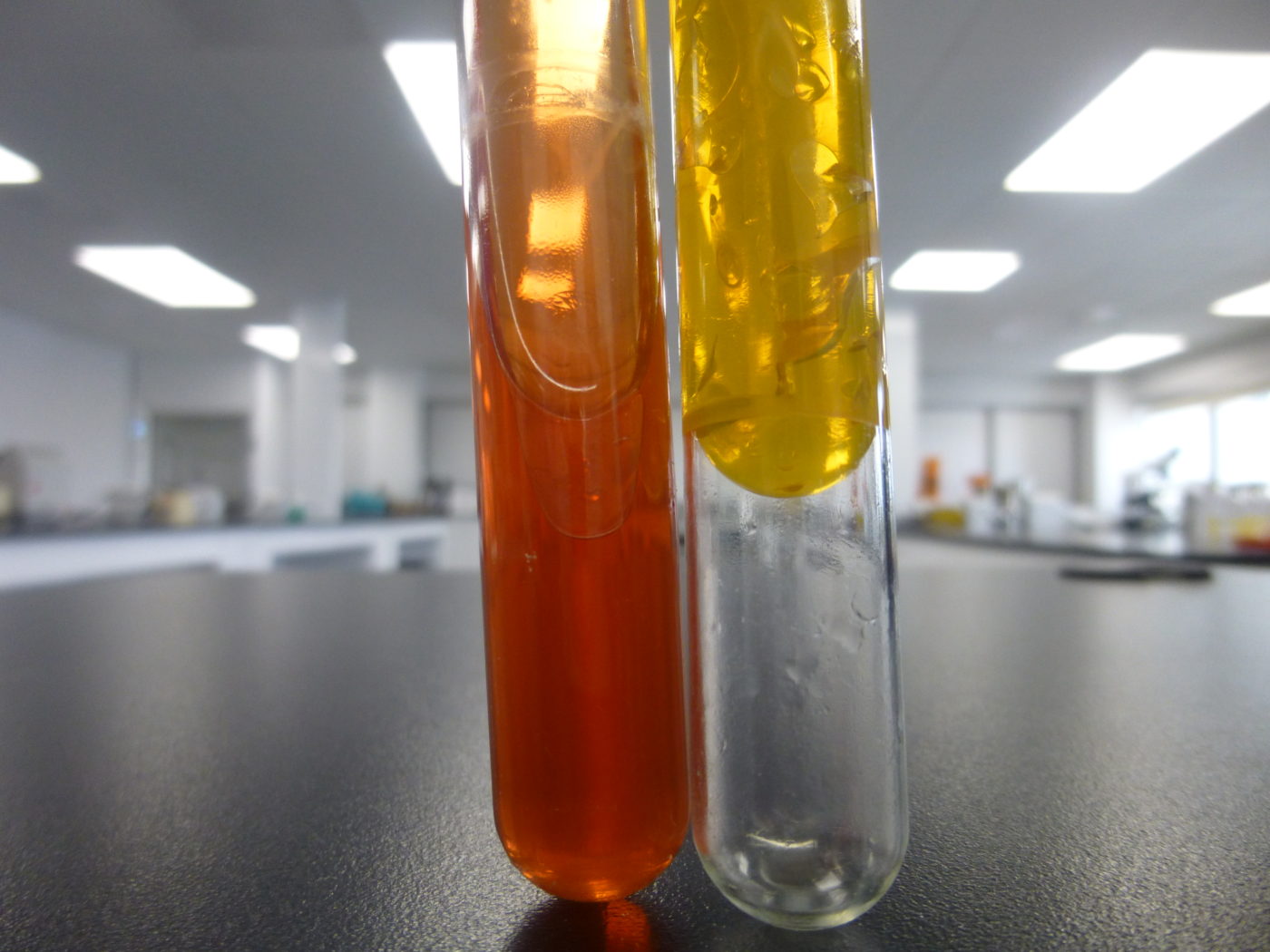
The tube on the right contains E. coli isolated from pond water and the tube on the left is sterile. The agar contains lactose. The E. coli consumed the lactose and made acid, turning the agar from orange to yellow. Additionally, the bacteria produced gas, pushing the agar up the test tube.
It’s not perfect- there are several species of soil bacteria that are able to use lactose and are not considered pathogenic to healthy people. That’s why further tests can be done.
Coliforms that can grow in the presence of bile salts are considered fecal coliforms. These bacteria originate in the mammalian intestine, a place rich in lactose and bile. The presence of fecal coliforms indicates the water has been contaminated with fecal matter and is unsafe. E. coli is detected in water as a representative fecal coliform.
Our Experiment with Pond Water
In winter 2018, several members of the London Middlesex Master Gardeners allowed their backyard pond water to be sampled. This water was taken to Fanshawe College where first year Chemical Laboratory Technology and Environmental Technology students tested the water for coliforms and fecal coliforms as part of their microbiology lab work.
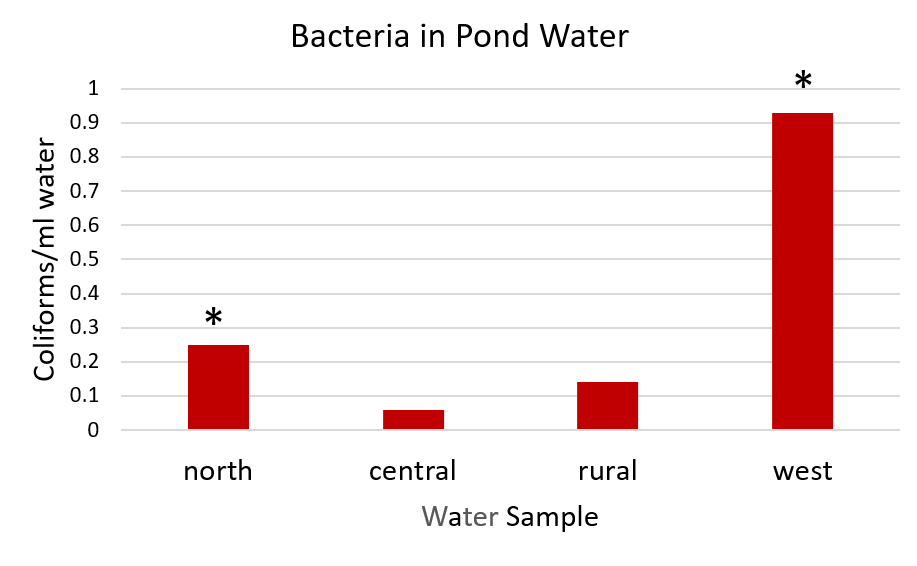
Coliforms detected in backyard pond water. Bars indicate the amount of coliforms per ml of water. The asterisk indicates water that also tested positive for E. coli.
Results and Recommendations
All four ponds contained coliforms, however, the amount of coliforms varied greatly. The pond having the most coliforms had 15 times more than the pond with the least. Two ponds tested positive for E. coli and these were the ponds that had the greatest coliforms. If you aren’t drinking or watering edible plants with the pond water, then you do not need to do anything about the high bacterial populations.
- coli in irrigation water can be transferred to vegetables. If those vegetables are ones that you eat raw, then you could get sick from the E. coli. Keep this in the back of your mind to prevent yourself from dipping your watering can in the pond water to then water your vegetable garden!
Resources
- Ontario Drinking Water Quality Standards: https://www.ontario.ca/laws/regulation/030169 This outlines the bacterial limits permissible in our drinking water.
- New Brunswick Facts on Drinking Water: http://www.rpc.ca/english/pdf/water/Coliforme.pdf This is a good description of coliform bacteria and their risks.
- Is there a way to keep coli out of romaine lettuce? CBC: https://www.cbc.ca/news/health/romaine-lettuce-e-coli-vaccine-cattle-health-canada-1.4928168 An article that describes the problem of bacterial contamination of lettuce.
Read More about Watergardens – Planting a pond or water feature


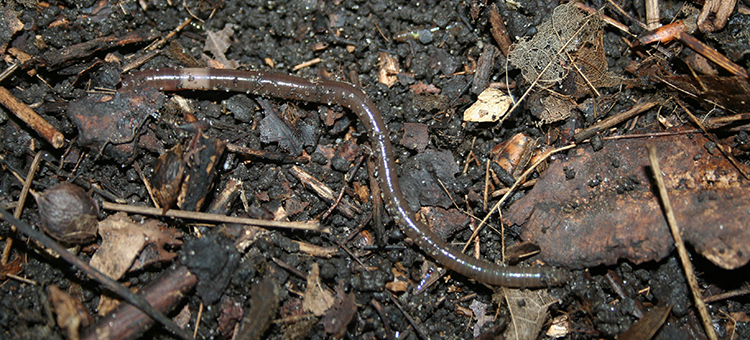

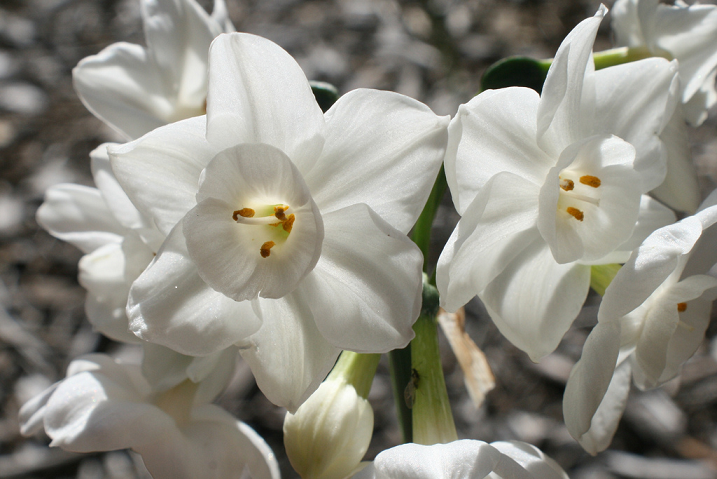
About The Author: Amy Turnbull
Scientist, researcher and professor at Fanshawe College. Avid grower of edibles in her home garden.
More posts by Amy Turnbull